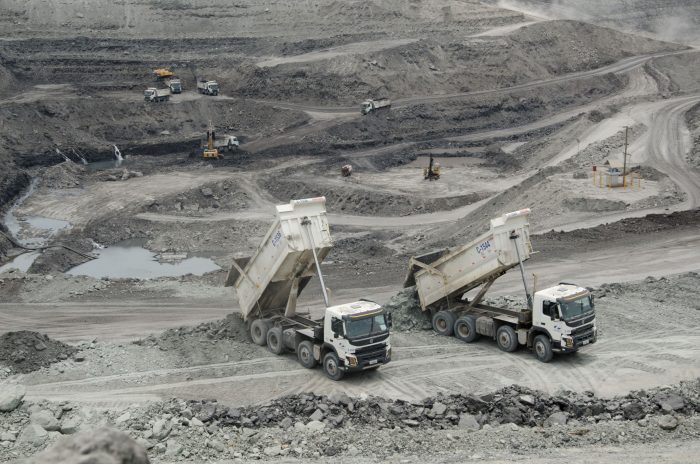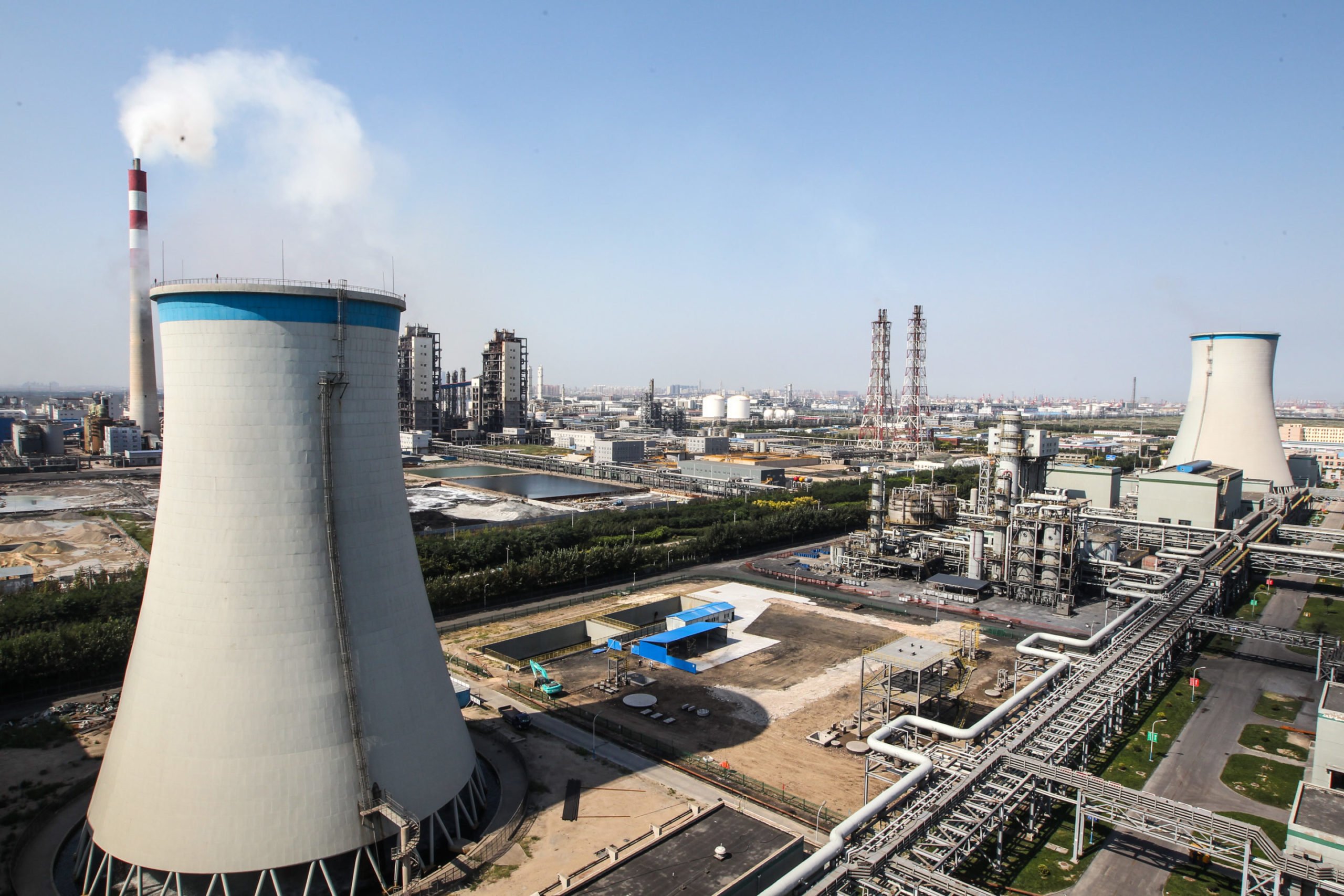Mired in a profound and lengthy economic crisis, the state of Rio Grande do Sul, which holds 90% of Brazil’s coal reserves, has opted to expand mining and create a coal gasification centre.
The initiative would enable the government, billions of dollars in debt, to create thousands of jobs but also risks locking-in into high-carbon energy infrastructure.
As the state set out to find foreign investors for the project, it found China.
“We know that China as a whole has been investing in the area of energy,” says Susana Kakuta, Rio Grande do Sul state secretary of mines and energy. “China uses technologies that are already well-established worldwide, so it is a big win-win, for them and for Brazil, especially for Rio Grande do Sul, in a new opportunity for coal from our state.”
Though the deal is not yet done, Kakuta, claims there is interest in the coal centre among companies already investing in the Brazilian energy sector, such as the Shenzen Energy Group and Zhejiang Electric Power Construction Co (ZEPCC).
Growing Chinese presence in Brazilian energy
The project would follow an established trend of Chinese companies investing in Brazil’s energy sector.
As reported in the newspaper Zero Hora, Chinese state-owned companies already control approximately 70% of the power distribution system in Rio Grande do Sul, in addition to hydropower and wind generation.
Chinese investors already back Phase C of the President Médici power plant in Candiota (also known as Candiota III) in Rio Grande do Sul. Much of the R$ 1.5 billion ($US380 million) equipment comes from China.
Alberto Wiebbelling and Tarsi Pires, who advise ZEPCC, say the Chinese are interested in investing in the coal gasification centre, but negotiations have not yet advanced.
“Today the Brazilian coal chemical sector is the focus of Chinese investors, which relates to [Chinese president] Xi Jinping’s goal of internationalising Chinese industry,” says Wiebbelling, of consultancy IAB.
Overseas coal
China has been financing coal in countries around the world, in a move that contradicts domestic policy, which has made efforts to slow the domestic coal sector and promote renewable energy technologies.
Brazil represents only a small fraction this investment. Most of it goes to countries that participate in the Belt and Road Initiative (BRI), which is intended to strengthen infrastructure, trade, and investment between China and approximately 65 countries worldwide.
According to Chinese NGO Global Environmental Institute (GEI), China participated in financing 240 projects linked to coal in countries with BRI agreements between 2001 and 2016. India, Indonesia, and Mongolia were the main beneficiaries.
For Kevin Gallagher, director of the Global Development Policy Centre at Boston University, three factors explain China’s strategy.
First, China’s coal sector is operating beyond its capacity, while there are increasingly strict environmental regulations within the country. Secondly, Chinese companies are at the technological forefront of ways to reduce pollution from coal-fired power and want to sell equipment.
Finally, these companies use their political connections with large Chinese state banks, which provide financing at competitive rates.
“Now China is making great strides to use coal through gasification rather than burning,” said Alexandre Grigorieff, chief operating officer at Copelmi, a mining company.
Ilan Cuperstein, a former Brazilian representative to the Brazil-China Centre on Climate Change, said: “China has invested in technologies to reduce pollution and emissions of greenhouse gases and pollutants, and obviously wants to maximise return by exporting these technologies.”
A state in crisis
Rio Grande do Sul’s strategy contradicts national and international pledges to cut fossil fuels. But the government estimates that it could boost the GDP by R$20 billion (US$5 billion) and create 5,400 jobs, directly and indirectly by 2042.
To facilitate plans, in 2017 the state government enacted the Rio Grande do Sul Coal Policy. The policy created a coal-chemical centre, and industrial complexes to mine coal and produce derivatives.
Coal produces energy in two ways. One is by burning the mineral, which is produces more CO2 emissions. The other is coal gasification – putting crushed coal into a high-pressure ‘gasifier’ where it mixes with other chemicals to produce synthesis gas (or ‘syngas’). As well as generating energy, Syngas produces derivatives such as ammonia and urea, which are used in fertilisers.
The State law permits both production processes, but Kakuta says the government proposes to replace direct combustion with syngas.
However, investment is needed to put the plan into motion, an impossible task for a state in such serious financial crisis. Three years ago, Rio Grande do Sul exceeded proscribed debt levels.
Nor could it secure resources from national government agencies. The Brazilian Development Bank, (BNDES), which supports projects in crisis-hit parts of the country, lost 13% of its investment capacity compared to 2017.
Furthermore, Brazilian coal has specific characteristics that complicate using combined cycle gasification, research from the Brazilian National Geological Service says.
According to Sergio Meth, coordinator of the department of chemical engineering at the Federal University of the Pampa, importing foreign technology for gasification without proper studies is a risk.
“We must analyse what method of gasification would be chosen, there are techniques that are more and less suited for the coal here,” he says.
Meth adds that the State government should include researchers in missions to China to better understand the consequences of using its technology: “It is very important to attract Chinese investors, but it is regrettable that the political aspect is placed ahead of the technical aspect.”

There have been problems in the past. In 2014, the boiler at the CANDIOTA III power plant, (developed by Chinese group Citic) wore excessively due to highly abrasive coal ash, forcing the plant to operate at 58% of its installed capacity.
Jobs vs environment?
Minister Kakuta says the coal-chemical centre will generate employment and taxes, stimulate industry, and reduce dependence on other energy sources, such as natural gas from Bolivia. High technology companies would also upgrade the economy in southern Rio Grande do Sul, the poorest part of the state, she says.
Meth agrees that there will be economic benefits to the project. “Coal chemicals are the great future of the region, with the potential to generate 5, 10, even 20 billion dollars per year.”
Yet the project could have other, significant costs. Though some industrial processes have improved, the plant would massively increase demand for water, perforate soil, and increase carbon emissions.
“In the case of coal production, there are significant air pollution problems at the local and worldwide levels,” says Gallagher. “This could significantly harm the livelihoods of neighbouring communities and contribute to global warming.”
Cuperstein adds: “With the report from the IPCCshowing what we need to limit global warming to 1.5 degrees. It is impossible to consider construction of new coal-fired power plants.”
The main threat, he says, is “locking-in” expensive and polluting projects: “These are investments that take a long time to provide a return. So you get stuck with this built infrastructure that creates a kind of commitment to using coal in the coming decades, and this is also very worrying”.
